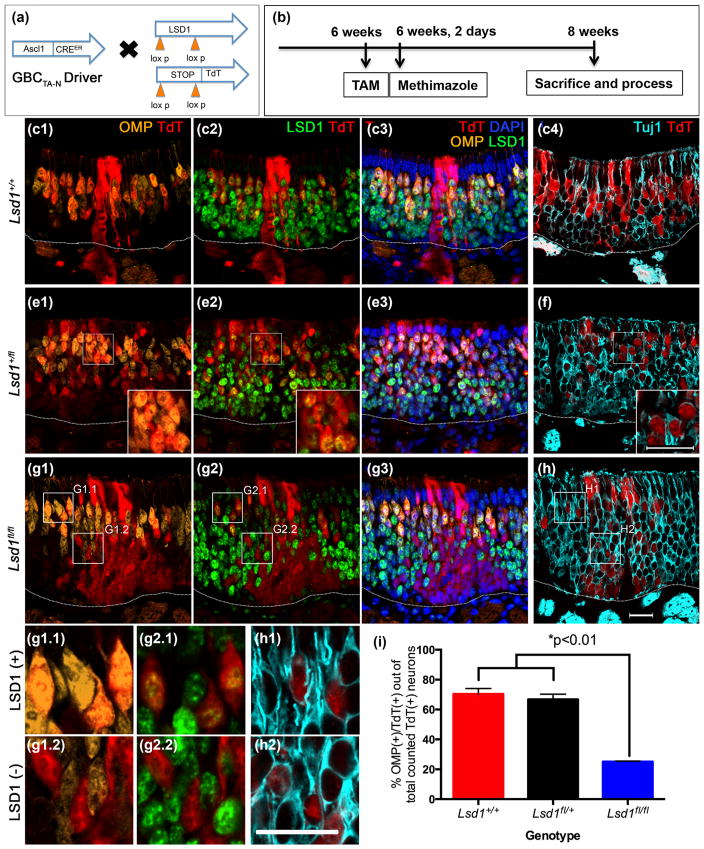FIGURE 11.
Neuronal maturation of progeny from transit-amplifying Ascl1 (+) GBCs is also blocked following olfactory lesion when Lsd1 is excised. (a, b) Transgenic mice and experimental design. (c–f) In Lsd1+/+ and Lsd1fl/+ mice, neuronal progeny from Ascl1 (+) GBCsTA-N mature into OMP (+) OSNs by 2 weeks post-methimazole lesion. (g–h) In contrast, in Lsd1fl/fl mice, neuronal progeny from Ascl1 (+) GBCsTA-N do not mature into OMP (+) OSNs for the most part and instead are Tuj1 (+) immature OSNs. The small percentage of OMP (+) OSNs that emerge remain LSD1 (+) (g1.1, 2.1) in contrast to those that lack detectable LSD1 (g1.2, 2,2); antibody incompatibility prevents us from determining the status of LSD1 staining in the neurons that lack Tuj1 labeling (h1). (i) Quantitation of the percent of Ascl1 (+) GBCsTA-N progeny that are OMP (+) cells out of the total number of counted TdT (+) neurons (both OMP (+) and Tuj1 (+) OSNs). Mean percent and SEM are plotted for each genotype (n = 3 per genotype). Dotted white line indicates the basal lamina, scale bar in (h) represents 20 μm and applies to (c–g) as well while scale bar in inset (f) represents 20 μm and applies to insets in (e) as well. Scale bar in (h1) represents 20 μm and applies to (c1.1–h1)

